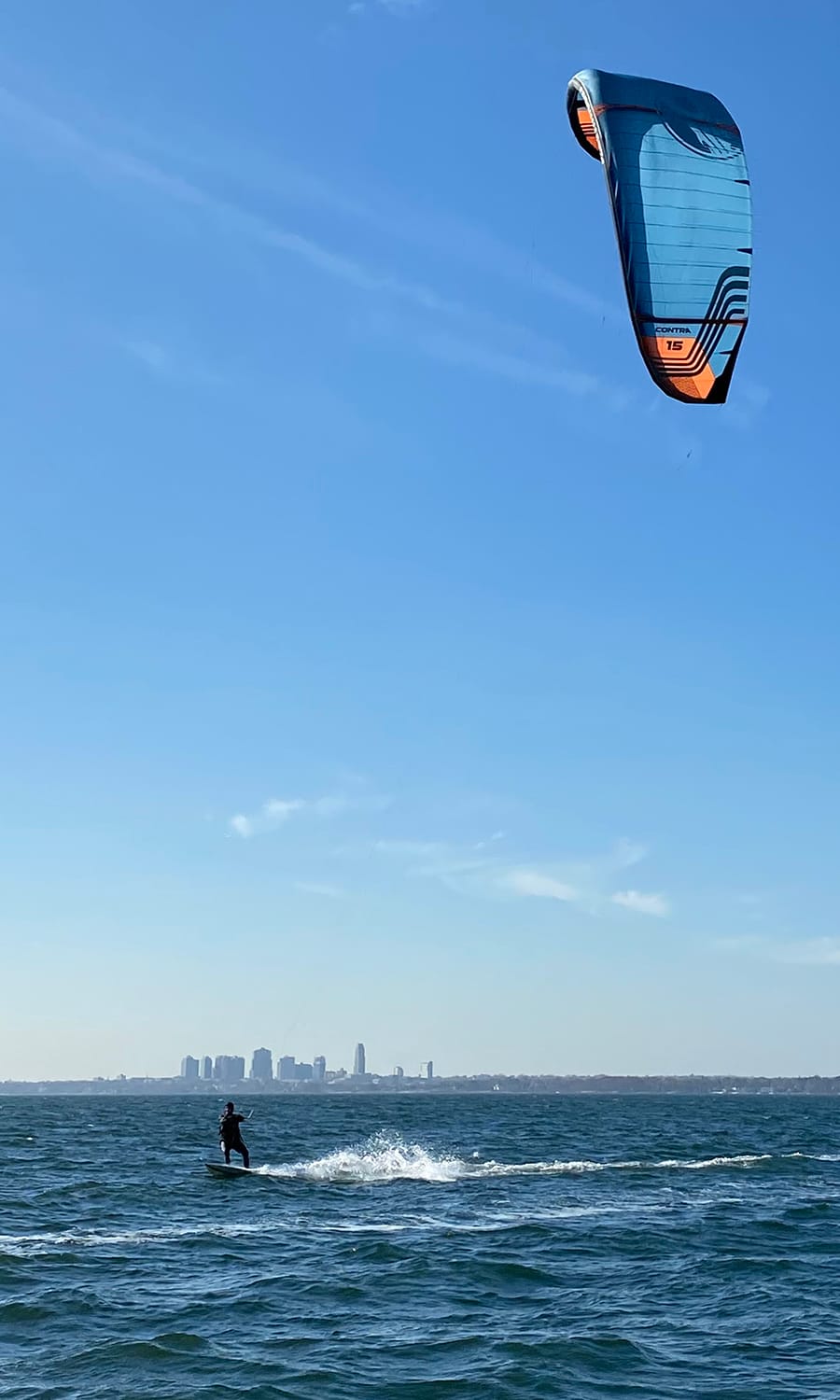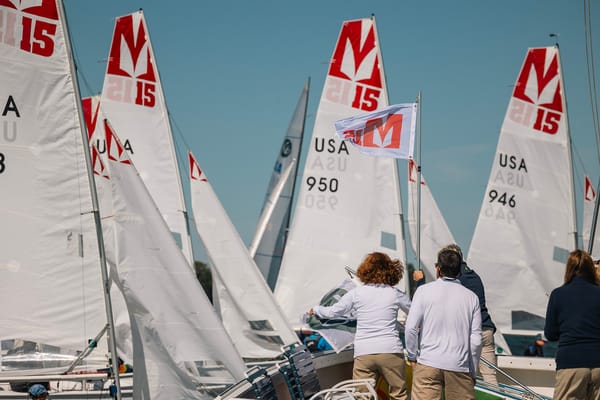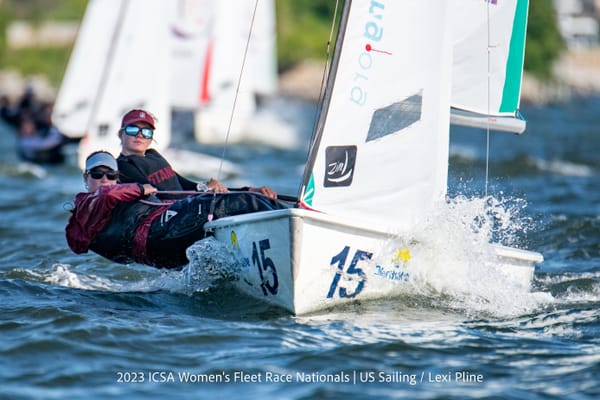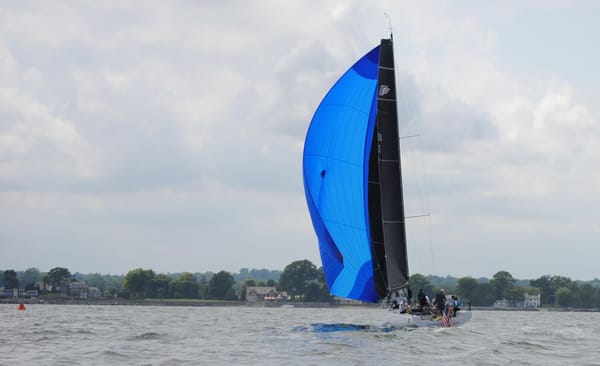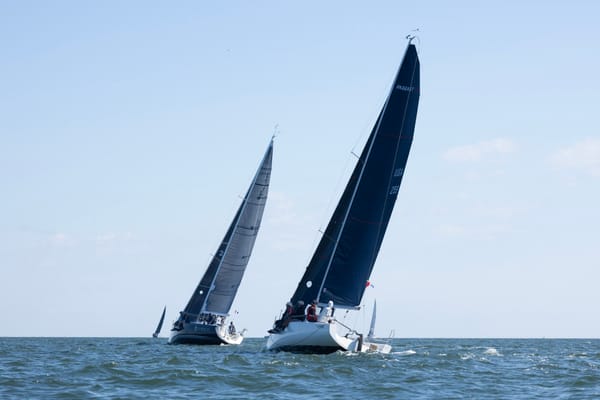The All Weather Kiting Crew
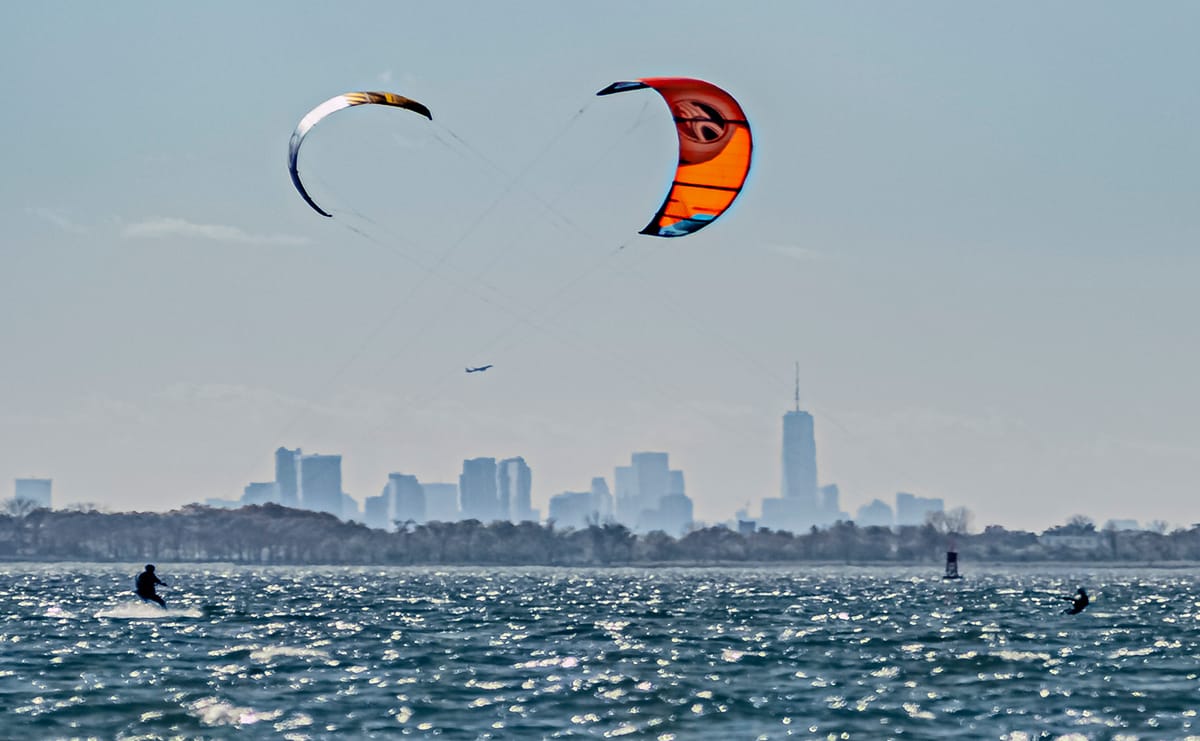
If you’re wondering who was wild enough to be out kite boarding in the middle of Long Island Sound about four weeks ago, when the temperature was 25 degrees Fahrenheit and the wind was blowing a steady 40 knots with gusts up to 50, you can wonder no more. It was long time AYC members Peter Hancock on the board and Tom Young driving the boat. Bell 42 was fortunate to catch up with Peter and Tom, to hear about their kite boarding adventures, the way they came together as friends and how they hope to share this exhilarating sport with anyone who’s interested to learn.
Peter Hancock first started kite boarding (or kiting, as it’s referred to by those in the know) as a way to get his son excited about sailing again. His son was a big snowboarder and when his interest in sailing flagged a little, Peter thought a sport that combines some of the most exciting aspects of sailing with some of the same techniques from snowboarding, would be just the ticket to recapture his son’s interest. Fast forward ten years and while his whole family enjoys kiting, Peter is the one who’s truly fallen in love with the sport.
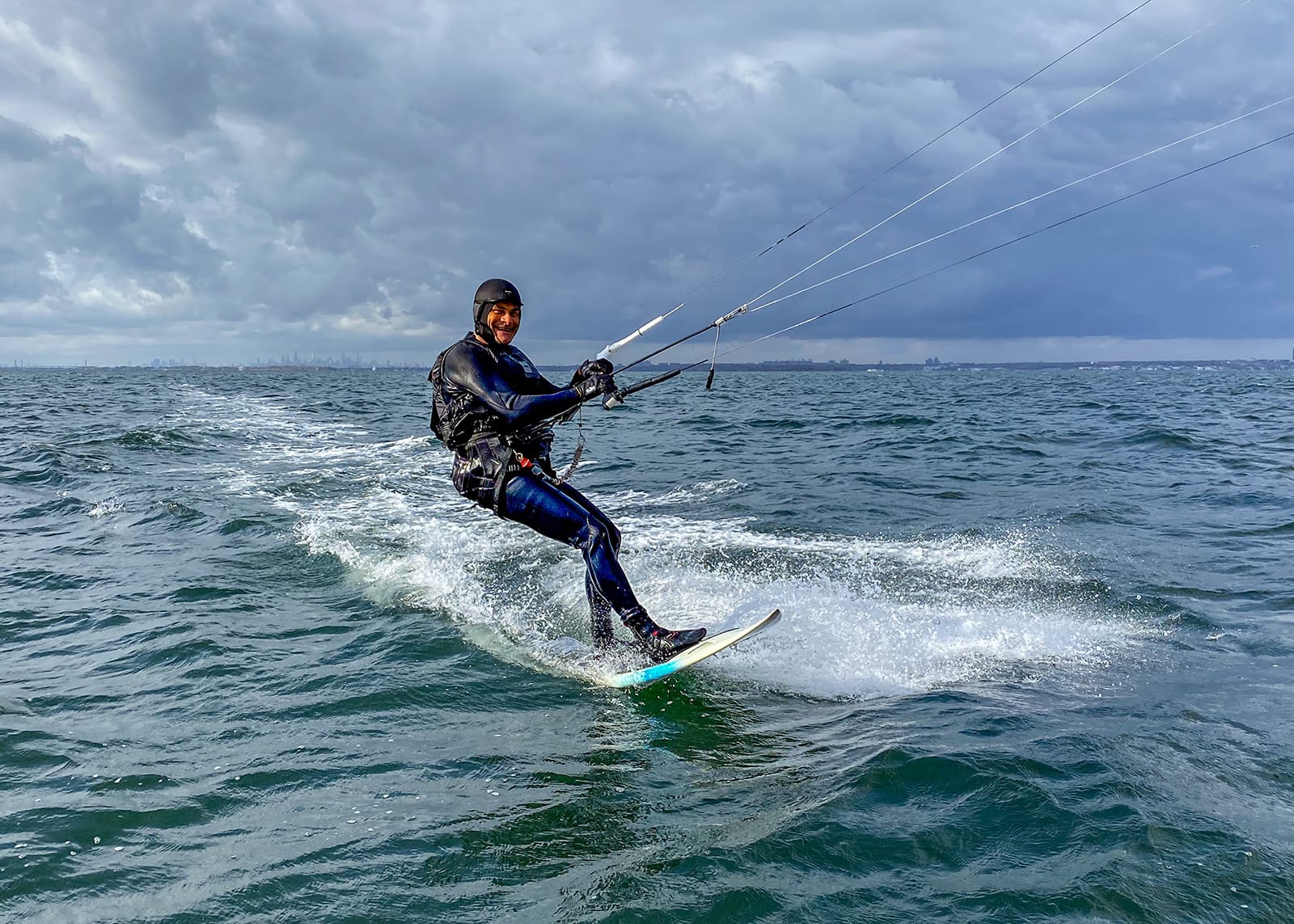
As Peter explained to Bell 42, kiters typically launch from a beach, and the closest decent kiting beaches to Rye are Long Beach in Bridgeport, CT or Tobay Beach on the South Shore of Long Island. After a while, Peter became frustrated with driving all that way, and he figured out how to launch the kite from his little seventeen foot motorboat in front of his house here in Greenhaven. Because he was doing it solo, he developed a fairly safe method so that he wouldn’t get yanked out of the boat and get stranded. Peter considers this to be his main contribution to the local scene, first and foremost because the ability to launch safely from a boat, means those interested in trying the sport or those who already love it, can do it right here in Rye.
After Peter suffered a heart attack about a year ago, his wife insisted he stop kiting alone, so Kevin Broome introduced Peter to Tom, who’s become Peter’s lifeguard, boat captain and new best friend. Tom is not only an accomplished boat captain, he also has an extensive background in lifeguarding and safety preparedness. In 2010, AYC asked Tom to create a safety and rescue patrol, from scratch, which he did under the auspices of US sailing. He got 36 people certified and the program’s been running since then. As of this year, the club is absorbing the safety and rescue patrol into the race committee, so that ultimately everybody gets trained and every member of race committee becomes a safety and rescue officer.
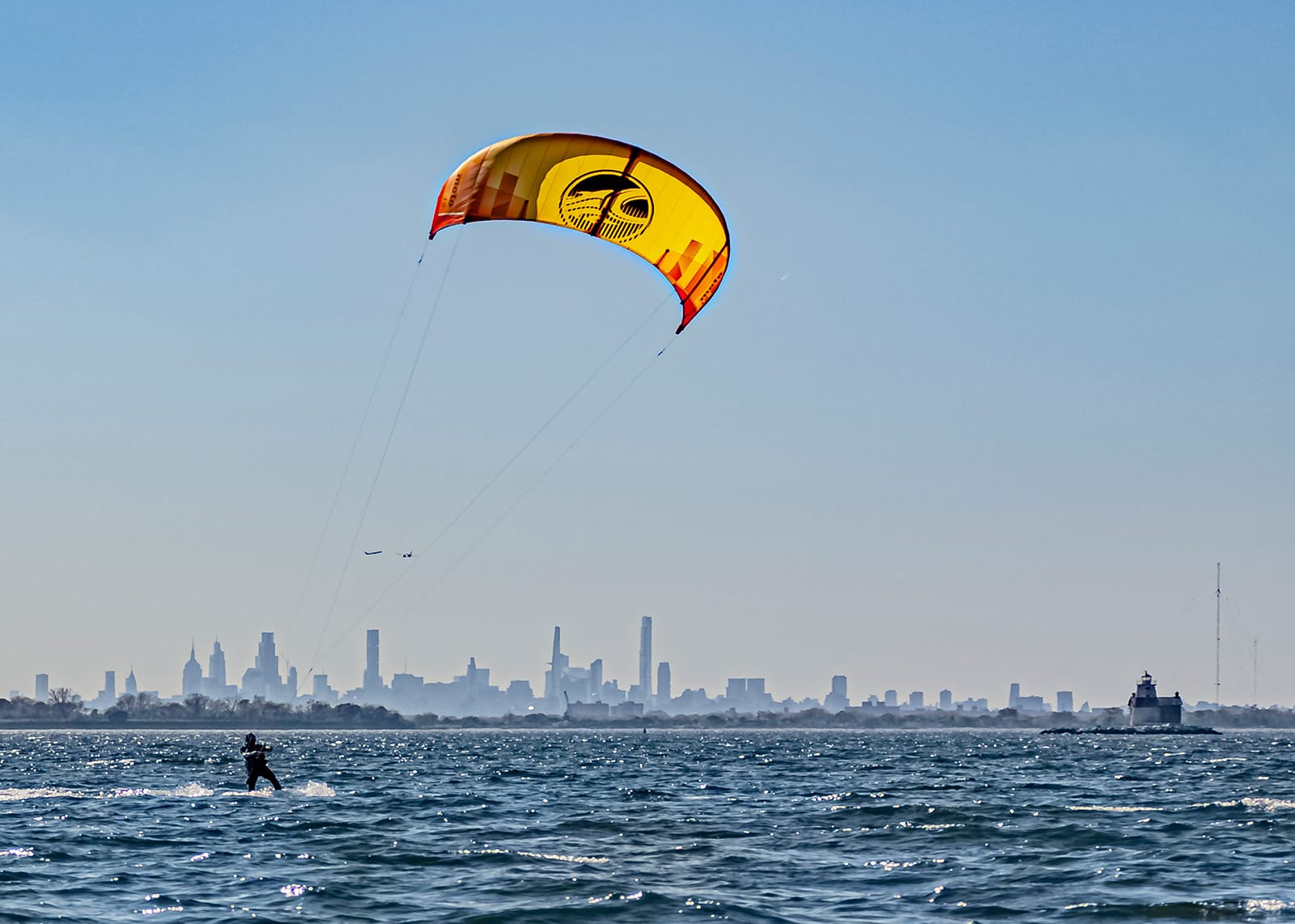
Tom is also a US coast guard licensed master, he holds a 50 ton license and, as of last year, with Kevin’s encouragement, he became certified as a US power boating instructor. When you put all of those things together, he’s a very qualified safety official to have out on the boat for Peter or anyone else looking to kite. As Tom explains, “[I]t’s an essentially, I don’t want to say dangerous sport, but for those that haven’t prepared themselves well, kiting could be a dangerous sport. So can surfing, for instance. We’ve made all the preparations that we can and continually try to evolve the protocol for it and so far, so good”.
Before Peter and Tom expanded on the many advantages of kiting from a boat, rather than the beach, Peter was kind enough to provide a helpful overview of the different equipment involved. There are three types of board that are each geared toward different things. There’s a twin tip, which is what most people start in, where your feet are strapped in. It looks a bit like a snowboard. And this is the board you typically use to learn, as well as the board you use to do jumps and aerial tricks. Another type of board is the surf board, which, not having straps, offers, as Peter describes it, “lots of freedom to put your stance exactly the way you want, but it’s challenging, as you can imagine. I’m still learning how to do what’s called a foot switch. When you jibe, you have to switch from one foot in front to the other one, without falling, and I’m deeply frustrated by my slow learning curve on that”. Finally, there’s the foil.
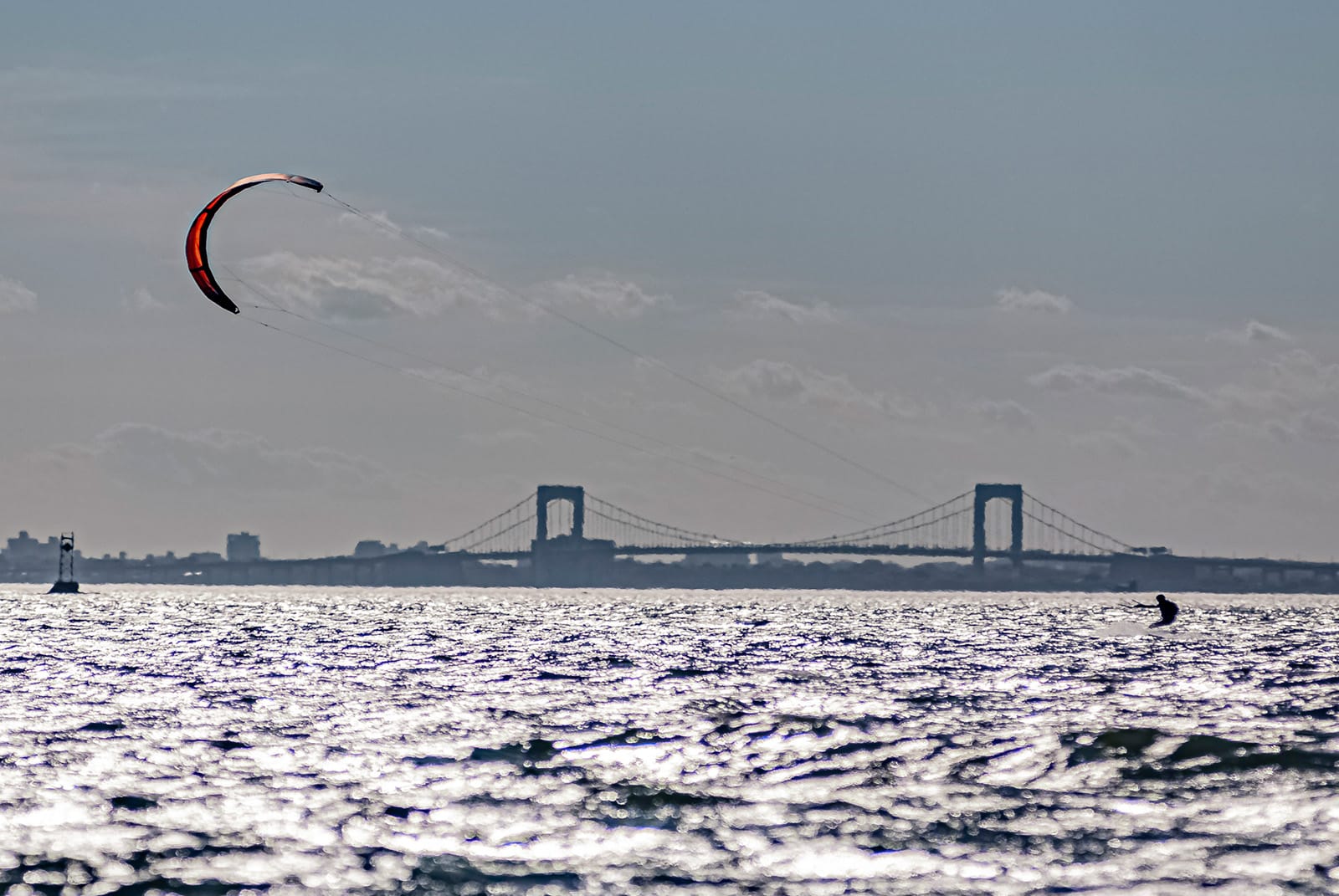
Peter treated Bell 42 to the following, extremely colorful depiction of the foil experience. “The foil is a whole other dimension, where you’re flying above the water. It allows you to go in lighter air, but also, in choppy wave conditions, it’s as smooth as ice skating, because you’re flying above the waves, the foil is flying below the waves, and it’s another whole dimension of balance. You know, you are balancing fore and aft, and port and starboard at the same time as trying to keep the kite flying in the same position, because if the kite changes, you get more lift or less lift. So you have to correct with your feet. It’s sort of like riding a unicycle while juggling.” Sounds like fun!
So those are the three boards - the twin tip, the surf board and the foil. And as far as kites, the differences are really just in size. Peter has sizes ranging from 7 square meters to 19 square meters, but on LI Sound, most of the time he uses a 12 or a 15 for the wind conditions.
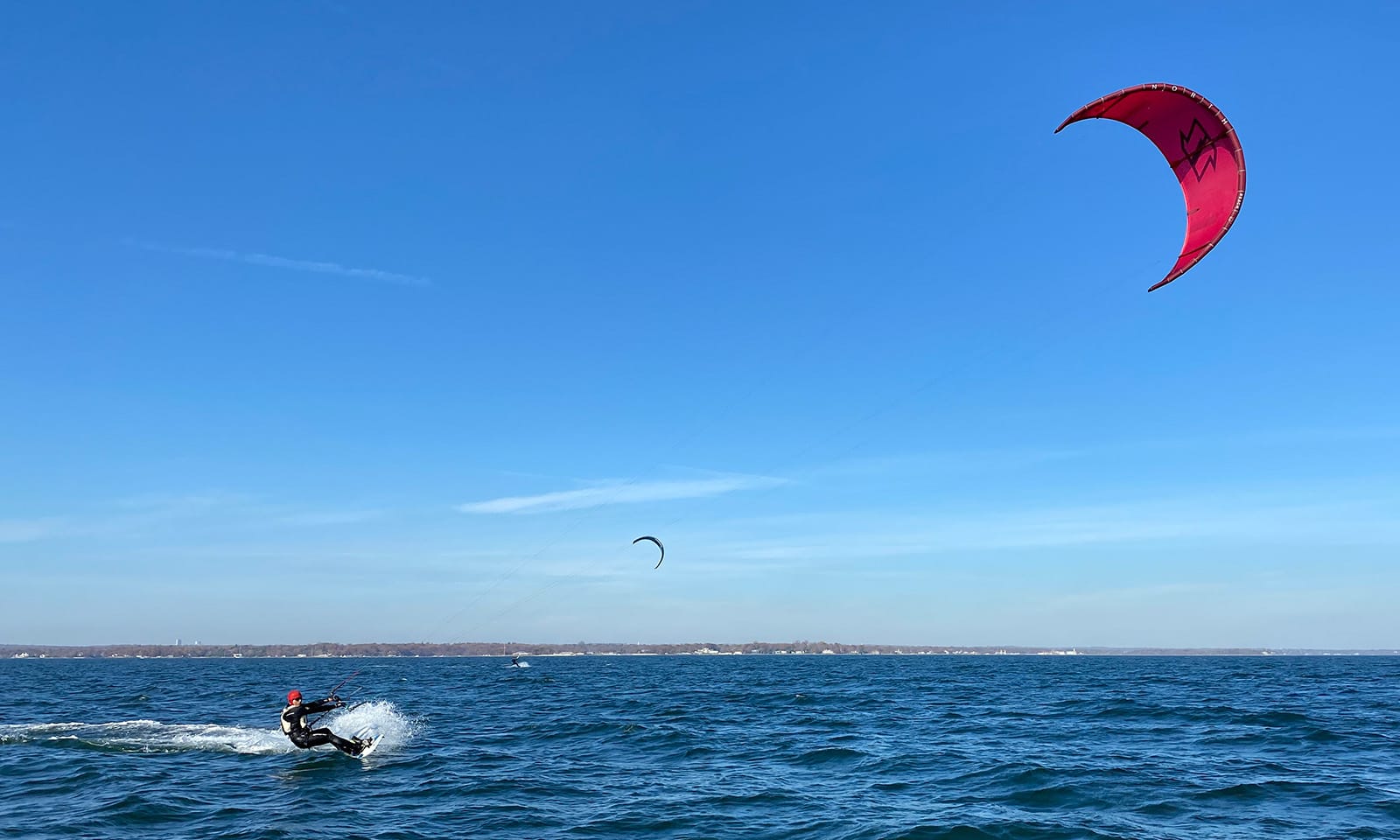
That’s all the equipment you need to get out kiting, and as Peter explains, you can buy secondhand equipment, or you can rent it from schools, and while it’s a bit expensive to get going, it’s well worth it in the long run.
One thing that gave Peter the space to really fall in love with kiting was the extra free time he had after retiring. But for those who may not have that time luxury, the benefits to launching from a boat are even more significant. As Peter explains, “when you go from a boat, you can launch in many different directions and it doesn’t really matter which way the wind is coming from. From the beach, you’re really restricted to days when the wind is blowing either onshore or, so called, side shore. Which just cuts the number of days you can kite in half”. And if you’re restricted to kiting on Saturdays and Sundays, you might make your plans based on a forecast, but when the front comes through at midnight instead of noon, you wake up and your weekend plans are ruined. So this extra flexibility is really helpful because, as Peter puts it, “anybody who’s kited knows this sort of inability to make plans, given the vagaries of the wind.” Tom adds that “[I]t’s the same mentality as surfing, because we’re always waiting for the waves and the tide and the offshore winds to be right. And when you get the call to say, ‘it’s on’, it’s on. Nature doesn’t wait for you, you’ve gotta go.” But for those who need to balance nature with the demands of a full time job, the boat launch allows you to maximize your kiting time.
Further to that, being able to go by boat makes it easier to navigate “the idiosyncrasies of LI Sound”, as Tom puts it. So if the kiting conditions are great on the opposite shore or further east or in the protection of something like the Throgs Neck, they can take advantage.
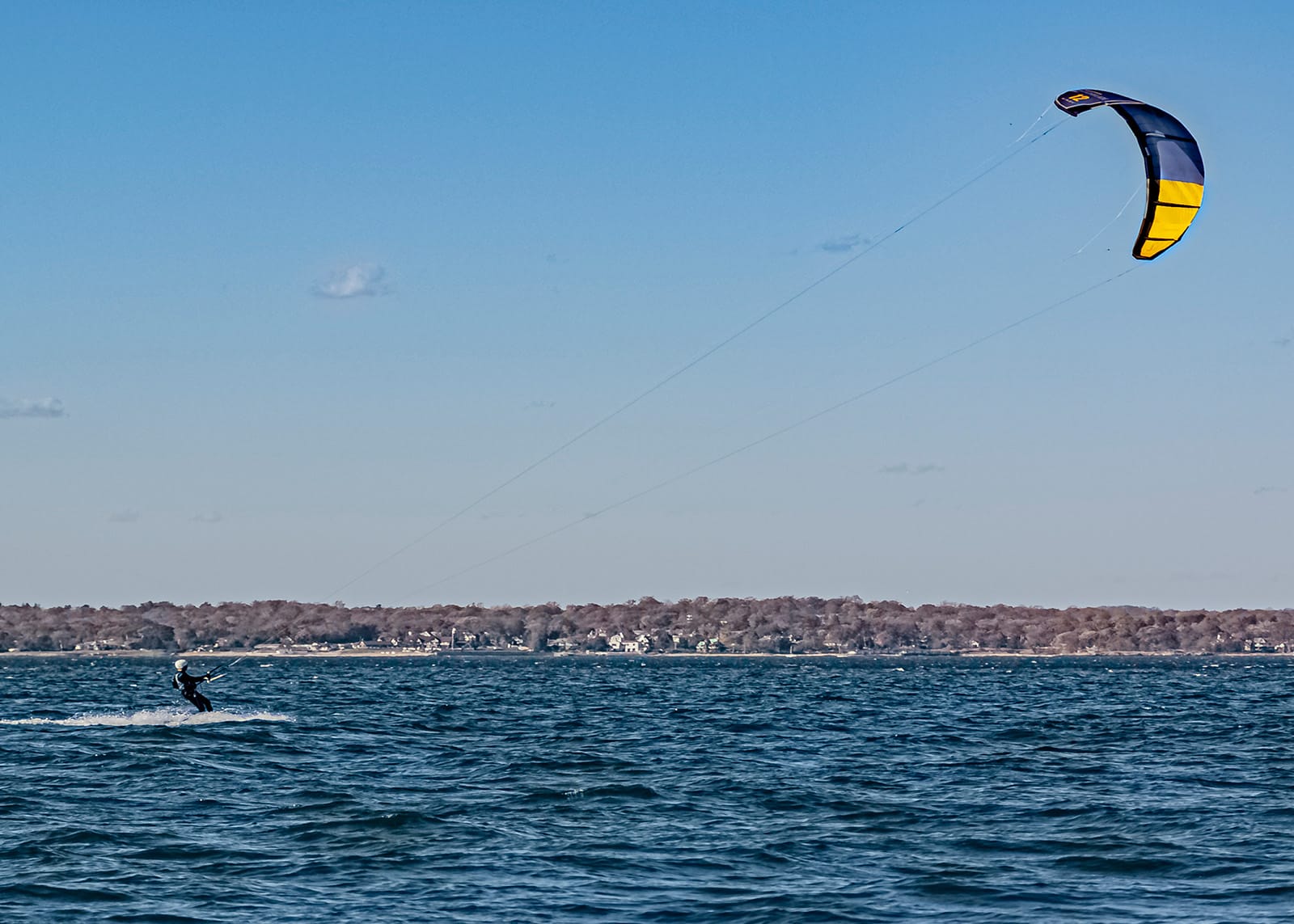
As Peter explains, unlike sailing, where you’ve got a much broader range, for kiting, you really need a windspeed between 15 knots and 30 knots. That range is a little bit wider, at the low end, if you do kite foiling. You can probably go out on a foil in 12 knots and maybe even lower if you’re light. “At the high end, we’ve been out in as much as 40 knots, because we’re crazy.”
As Peter and Tom have worked together to fine tune the boat launch process, one important innovation is the use of a drogue. Initially, Peter was either picking up a mooring just off the tip of Scotch Caps, or just off his house in Greenhaven, or anchoring, with a lot of anchor line, in the Sound. But with the depth of the Sound, retrieving that anchor was a big hassle. So they came up with the idea of a drogue, which has turned out to be a fantastic way of stabilizing the boat while they launch the kite in the middle of the Sound. Then they either leave the drogue out and Tom slowly drifts downwind while Peter kites around him, or Tom can pull it up very easily and chase Peter and any other kiters with his camera to get some fantastic photos. Or, when there are beginners aboard, Tom can go and rescue somebody that’s gone downwind. Beginner kiters have a hard time staying upwind, so the fact that Tom can always go downwind and retrieve them, is a pretty good set up for those still learning.
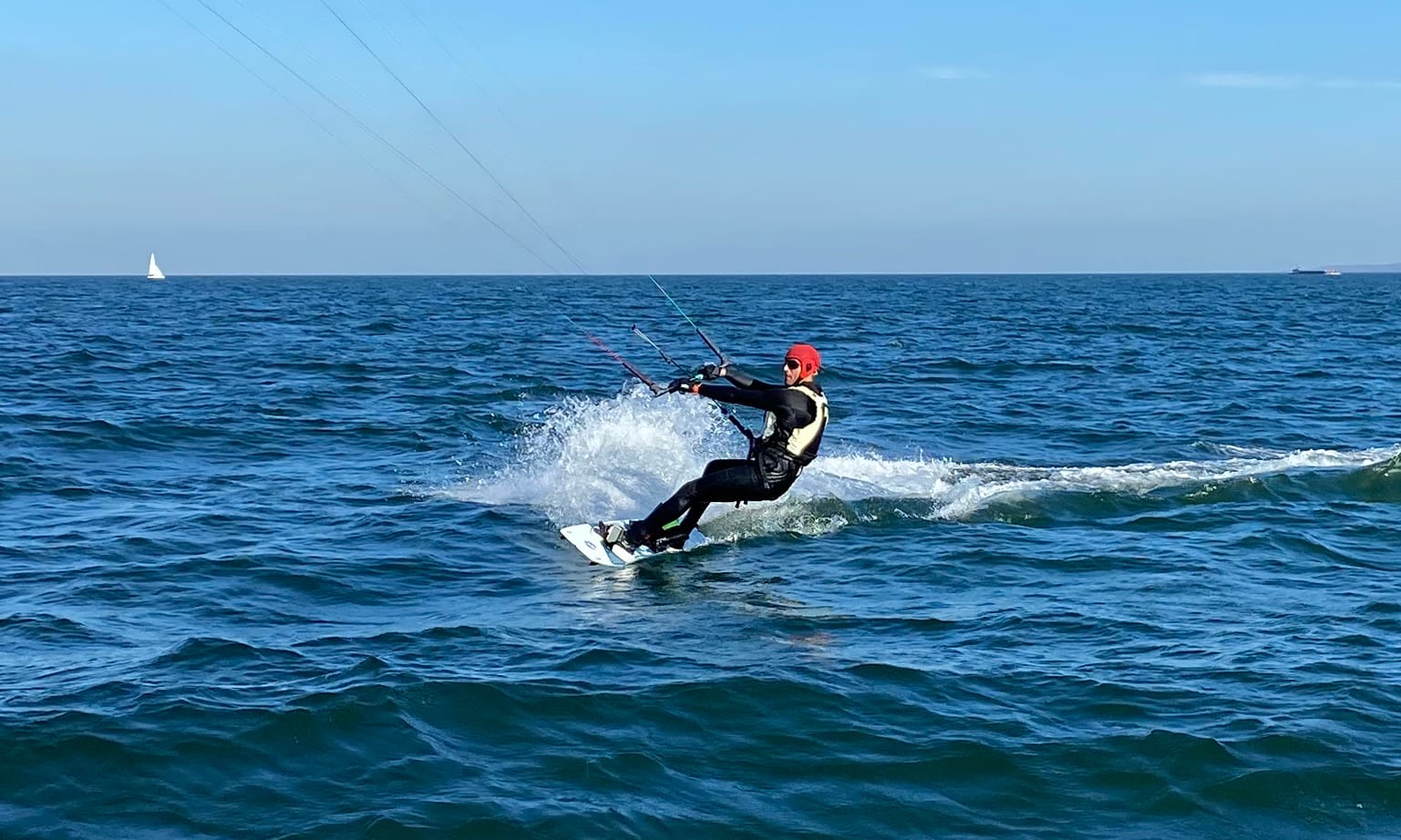
Learning to kite is quite a multi-faceted process, which involves not only learning to surf on what’s under your feet, but also how to control and steer the kite, which is like learning to sail all over again. As Peter explains, “[I]t integrates three things that I actually enjoy very much. One is snowboarding, so you’ve got a board where you’re thinking about which edge you’re on all the time. You’re sailing, how close to the wind you’re going, because if you point too close, you slow down and you sink. And if you bear off too much, you’re not making up any ground. And the kite itself is like flying an airplane. So my background as a pilot came in handy. You don’t wanna stall the kite and so the kite control is definitely something that takes a lot of practice. And then you throw into that the randomness of the wind, you know the wind speed is changing constantly and you’re having to adjust all these things all the time. So that’s why it’s a bit like meditation - you know, the moment you stop concentrating, you fall. So you can’t think about your job, you can’t think about your mortgage, it really keeps you very much in the moment, in a Zen way.”

Although Tom hasn’t started kiting just yet (he plans to this summer), he’s learned a great deal from taking Peter out. As he describes it, “I have to keep my head on a swivel, because I need to know every moment what’s going on. And Peter’s taught me and I learn every time I go out. If you’re not paying attention, and you’re not learning every time, then you’re not doing it right. It’s just all encompassing. And for that value, it’s wonderful. Then you come in and you got this big grin on your face, and it’s the best.”
What a wonderful way to spend time on the water, meet new people and be in the moment.
